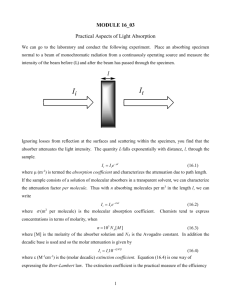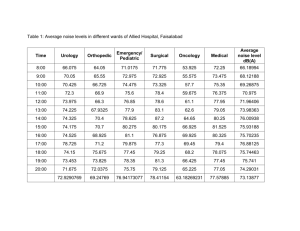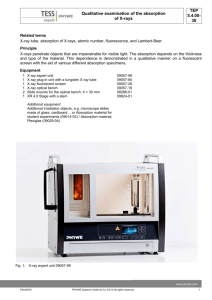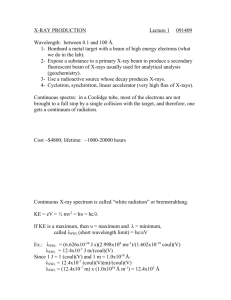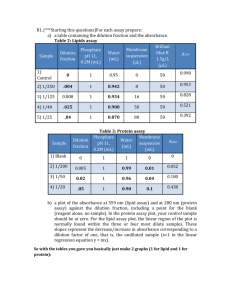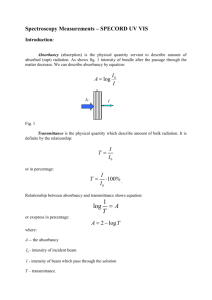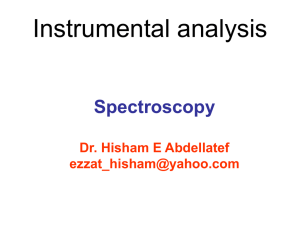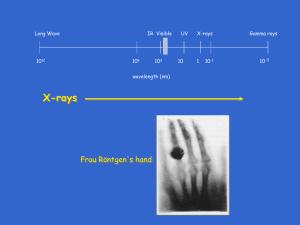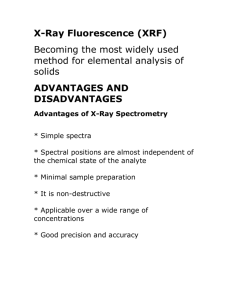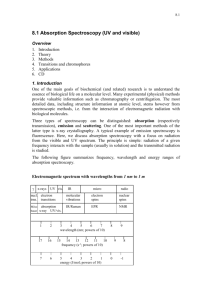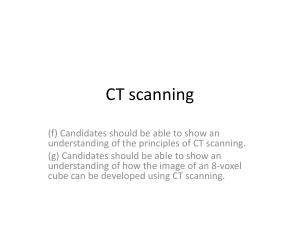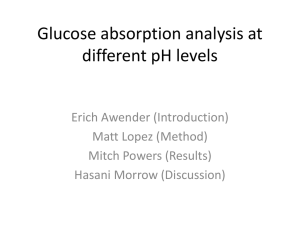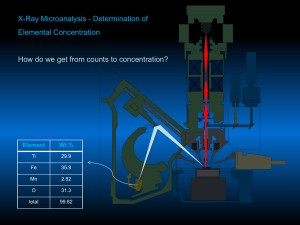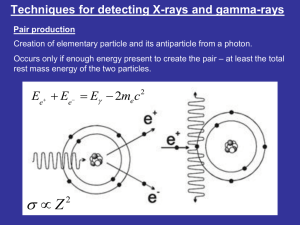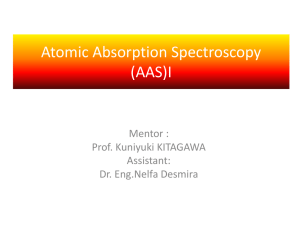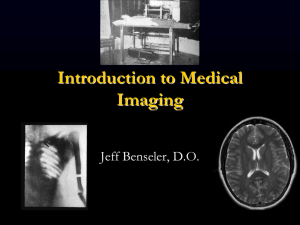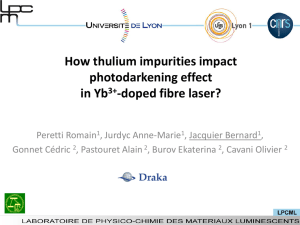x-ray absorption
advertisement
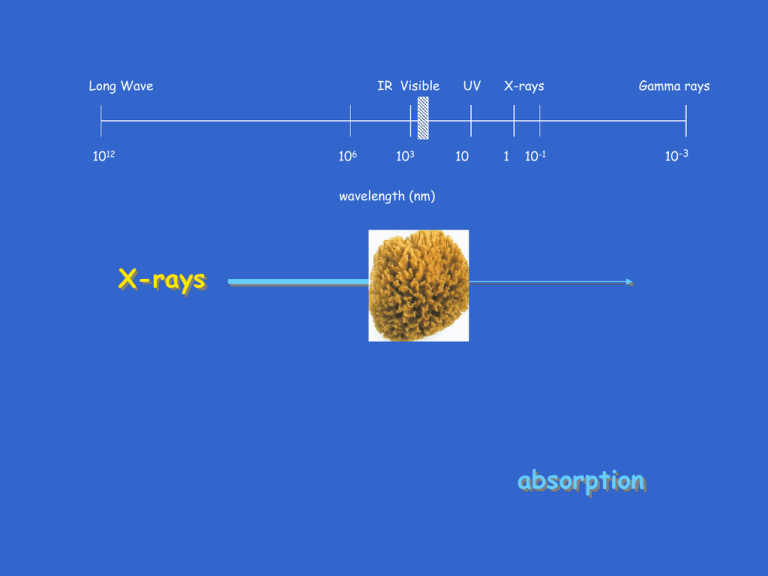
Long Wave 1012 IR Visible 106 103 UV 10 X-rays 1 Gamma rays 10-1 wavelength (nm) X-rays absorption 10-3 Absorption X-rays Io I x I/Io = e -µ* x = 1/ e µ* x = 1/ e µ x µ* = linear attenuation coefficient µ = mass attenuation coefficient = density of absorber Absorption µ - values for elements listed in various texts & International Tables for Crystallography Note that µ changes with X-ray wavelength Higher atomic no. ––> larger µ, in general Absorption What element used for X-ray tube windows? What element used for protection from X-rays? Absorption X-rays Io I x I/Io = e -µ* x = 1/ e µ* x = 1/ e µ x For compounds & mixtures, calculate µ from µcompd or mixture = (wt. fraction)element x µelement Absorption X-rays Io I x I/Io = e -µ* x = 1/ e µ* x = 1/ e µ x Example for NaCl (CuK: (wt. fraction)Na = 23/58.5 = 0.393, (wt. fraction)Cl = 0.607 µNa = 30.1 µCl = 106 µNaCl = (wt. fraction)Na x µNa + (wt. fraction)Cl x µCl µNaCl = 0.393 x 30.1 + 106 x .607 = 76.2 Absorption Mass attenuation coefficient for an element changes with mass attenuation coefficient X-ray wavelength (energy) like this: Kedge <–– energy wavelength ––> Good news/bad news Absorption Bad news Absorbed energy re-emitted as fluorescent X-rays mass attenuation coefficient Suppose: absorption for element in specimen X-ray wavelength used for diffraction Kedge <–– energy wavelength ––> Then: Absorption high Lots of fluorescence Absorption Bad news X-ray fluorescence radiation emitted at all angles X-rays detector 2 specimen instead of this: get this: I I 2 2 Absorption Good news - -filters -filter materials have atomic nos. 1 or 2 less than anode 50-60% beam attenuation Absorption Good news - -filters placing after specimen/before detector filters most of specimen fluorescence X-rays filter specimen detector


